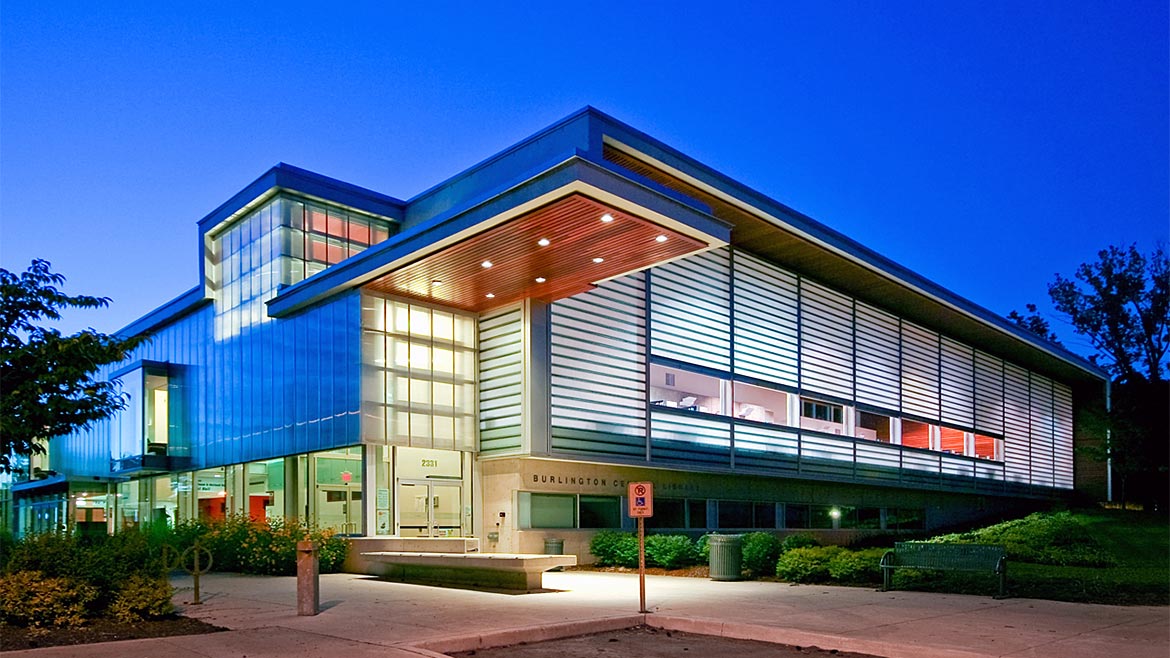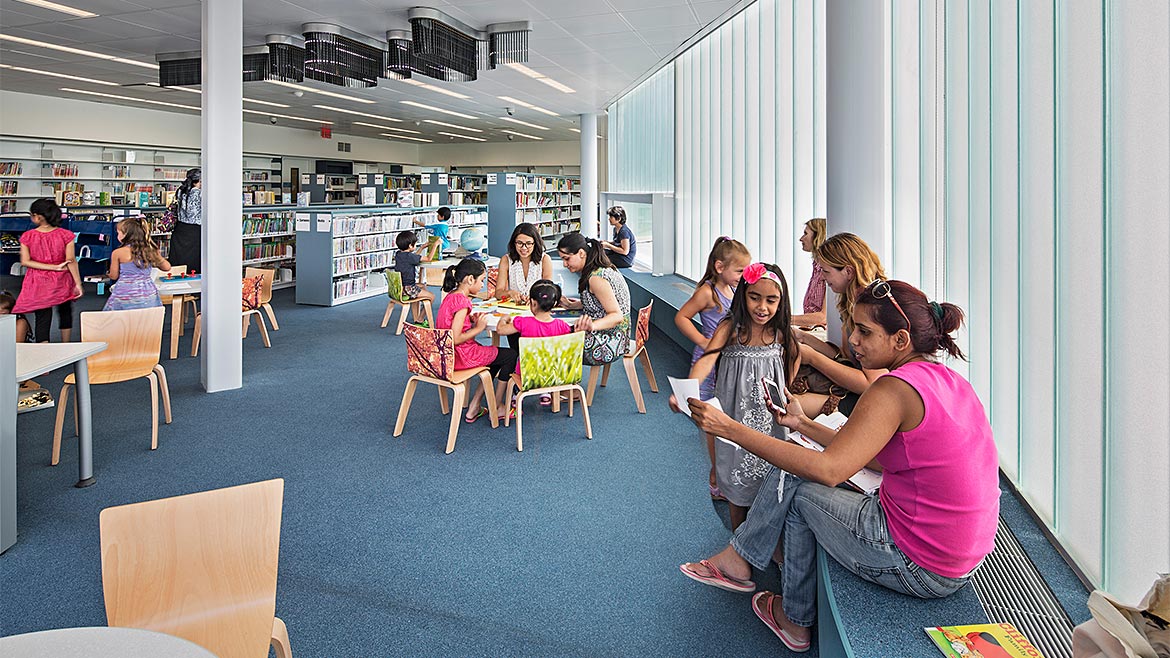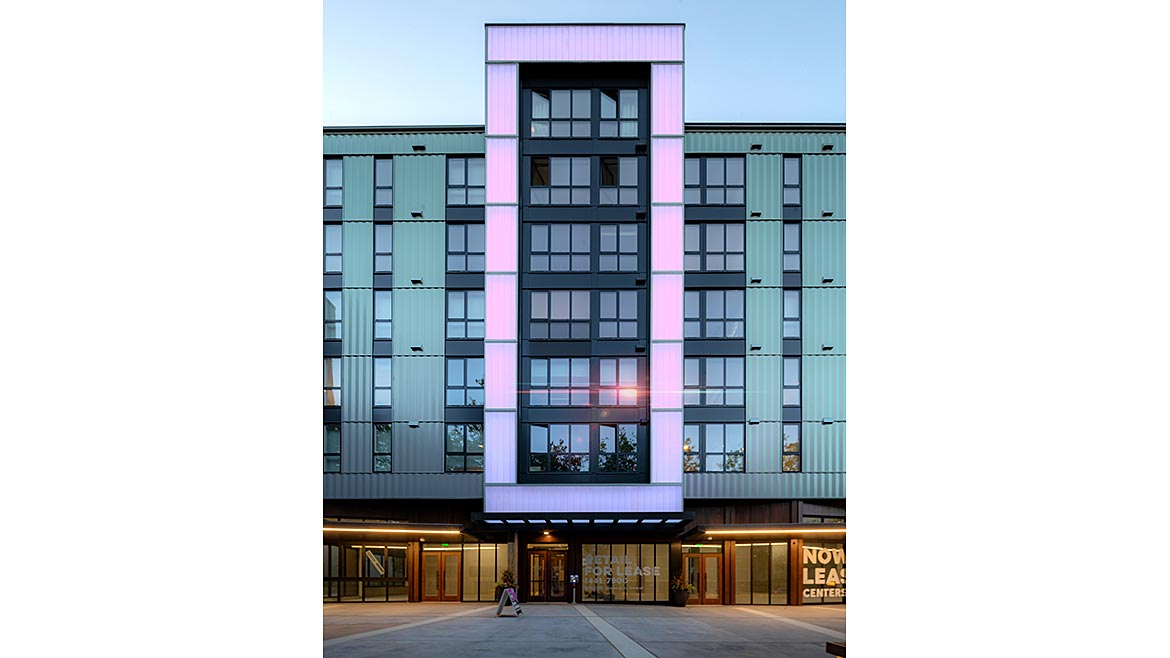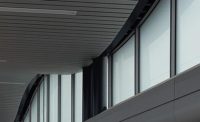Designing for functionality and aesthetics can be a delicate balancing act—especially when it comes to the building envelope. Not only must the building envelope achieve certain performance benchmarks to successfully separate conditioned and unconditioned environments but it is also important that it establishes a space’s visual identity. Contemporary and fluid designs that prioritize openness and incorporate extensive glass elements are increasingly popular. However, as energy codes become more stringent, achieving compliance with these designs can pose a challenge due to heat transfer. The difficulty is further increased when occupant privacy and well-being are essential goals.
Channel glass allows design teams to balance sophisticated building envelope designs with functional requirements like daylighting, energy efficiency and privacy. The U-shaped, self-supporting cast-glass channels can be configured in several ways: horizontal, vertical, raked, radiused and more. No matter the configuration, the translucent channels can transfer soft, even and glare-free light while providing low U-values, whether or not they include additional insulation. Accordingly, the high-performing channels that make a façade can diffuse light deep into a building without compromising energy goals.
To best utilize channel glass’ duality in the building envelope, it is important to understand how the material’s properties affect design outcomes. Such knowledge can aid in the specification process, leading to a building design that not only satisfies occupant needs but also honors the design team’s creative vision.


Facilitating User-Centric Designs
It is well-understood that buildings influence their occupants. Access to light, stable interior temperatures and acoustically isolated spaces are a few aspects that can contribute to occupant comfort and productivity. In a recently published research paper, “Common sources of occupant dissatisfaction with workspace environments in 600 office buildings,” the authors cite data to suggest spaces that do not provide privacy, access to daylight and open sightlines or expose occupants to high levels of noise transfer can negatively affect occupant health and wellness. In this way, designing for the end user can be as important as designing with other performance metrics in mind. Channel glass can help design teams facilitate outcomes that prioritize user well-being along with building functionality by achieving light-filled environments that feel safe.
Naturally lit spaces: A space filled with ambient daylight improves occupant well-being. However, the quality of light is as important as the quantity. Channel glass’ translucent surface addresses both, providing full-spectrum sunlight while diffusing it to create a gentle ambiance. The channels have a visual light transmission range of 70 to 75 percent in an uncoated, double-glazed application, giving building occupants the benefits of natural light. The material mitigates over-lighting during the sun’s peak hours to contribute to a building’s thermal performance as well as occupant comfort. These systems also reduce sharply defined shadows for a more evenly lit interior.
Thermal efficiency: With increasingly stringent energy goals, optimizing a building’s thermal efficiency in the face of hotter summers and colder winters is an important and sometimes difficult requirement to meet. A low-emissivity coating allows channel glass to reflect heat energy back into the building during cold months and absorb energy from the outside to reduce excess heat during summers. This coating can reduce channel glass’ U-value to 0.45 to support energy-efficient buildings.
Different channel glass configurations support distinct applications. Single-glazed channel glass is well-suited for interiors, providing desirable aesthetics and light diffusion. On the other hand, a dual-glazed channel glass system is more suitable for the building envelope, offering thermal performance and structural integrity. The air gap between overlapping glass channels reduces heat transfer in a double-glazed system. In addition, architects and design teams can use thermally broken frames or aerogel insulation in the air cavity to fortify thermal performance where heat gain or loss is a concern without compromising light transfer.
A sense of safety and well-being: Privacy can contribute to occupants’ mental health and a sense of safety. To enhance the sense of well-being, building plans can include means to obstruct open sightlines and sound transmission in their design goals. Nevertheless, hindering visibility might interfere with light quality and the experience of space. Unlike clear glass, which allows direct views, glass channels have a translucent texture and an array of pattern options that filter incoming light and obscure the visibility of occupants and activities in the building.
Additionally, excessive noise can cause discomfort, stress and disrupt productivity, especially in workspaces and multifamily residences. Specifying high-performing acoustic products can promote occupant well-being and improve occupants’ quality of life. Channel glass in a dual-glazed setting offers Sound Transmission Class ratings up to 44 decibels, effectively dampening loud conversations below the threshold of comprehension from inside or outside the building. Design teams can employ these systems to create a more peaceful and comfortable environment.

Accommodating a Multitude of Expressions
Architecture is as much a form of expression as it is about user comfort. In this delicate balance, channel glass can help building professionals realize high-impact designs without sacrificing performance. Because channel glass can support a variety of artistic styles, design teams can use it to create spaces that captivate the imagination.
Lengthen glazing spans: Due to technical and functional limitations, some façade systems require intermediate support, which can compromise aesthetic goals. Channel glass, on the other hand, can help design teams achieve expansive spans of glass without the need for any vertical mullions or bulky structural members. These systems can extend up to a height of 7 meters (approximately 23 feet) when installed vertically and can be stacked to achieve greater glazing expanses.
Support dynamic forms: In addition to linear settings, channel glass can achieve curved and serpentine applications to support a greater range of design styles. The systems can achieve tight radii—as low as 1.9 meters (6.2 feet), which enables compact curves in cylindrical stairways, swirling entryways and organically flowing façades. For curved or serpentine installations, the aluminum framing is stretch-formed into the desired radius. Cast-glass channels are then segmented around the framing to achieve the desired configuration. This fabrication process streamlines installation without compromising a unique façade design.
Give varied color and texture options: Cast-glass channels are available in a wide range of color and texture options. Their varying levels of translucency support inimitable, light-filled and visually protected spaces. Texture options range from no pattern to lines, waves and grooves that can further disperse light and reduce visibility into a building. Sandblasted channel glass enables greater opacity to balance privacy with well-lit interiors, making it suitable for offices, entryways and lounges.
Another way channel glass can make a lasting impression is through color. Colored laminates can serve as an obscuring privacy screen, providing moderate to no visibility, depending on the backing color. By selecting the desired level of opacity and color, designers can tailor the channel glass system to meet aesthetic and performance goals. To enhance the visual impact of the façade, especially at night, design teams can employ LED lighting systems behind channels and create an array of vivid colors and patterns.
Channel Glass: Best of Both Worlds
For the design industry, channel glass can be a holistic solution that goes beyond mere functionality and becomes a catalyst for creating spaces that prioritize occupant well-being and deliver high-impact visuals. In fact, by fusing form and function, channel glass merges design ingenuity and user-centric designs to synergize enhanced human experience within architectural spaces. Moreover, the material encourages design teams to push their boundaries and create seamless spaces that can captivate the senses and uplift the spirits.






Report Abusive Comment